
When I set out to write about a 97-year-old cartridge chambered in a 70-yearold rifle, I had to temper my expectations. Between today’s routine claims of half-inch groups from factory rifles, and expectations measured in megatons from anything called a “magnum,” modern shooters tend to regard anything that falls short in either area as quaint or useless.
The .300 Holland & Holland, I would contend, is neither. Nor is the venerable Winchester Model 70 (circa 1952) I used to test it. The cartridge surprised me with its power, and the rifle with its accuracy.
The .300 Holland & Holland was introduced by London’s most famous riflemaker around 1925 – essentially a slimmed-down .375 H&H intended to provide a smallbore, high-velocity cartridge for plains game in Africa and India. It had the .375’s belted case and a tapered body with a long, gently-sloping shoulder. Over the years, it was known by many names, including the “Super-Thirty,” .300 Belted Rimless Magnum, .300 Holland & Holland, and for a long time, simply the .300 Magnum.
Ballistically, it just matched the .280 Ross’ 150-grain bullet at 3,000 feet per second (fps), but had the added advantage of being available with heavier bullets. Originally, the 180-grain bullet had a velocity of 2,700 fps and the 220 grain, 2,350 fps, which put it in a class by itself. At the time, the only comparable American cartridge was the .30 Newton, but rifle production for it ceased in the early 1920s.
This story is from the April - May 2022 edition of Handloader.
Start your 7-day Magzter GOLD free trial to access thousands of curated premium stories, and 8,500+ magazines and newspapers.
Already a subscriber ? Sign In
This story is from the April - May 2022 edition of Handloader.
Start your 7-day Magzter GOLD free trial to access thousands of curated premium stories, and 8,500+ magazines and newspapers.
Already a subscriber? Sign In

OEHLER's New System 89 Chronograph
Measuring Bullet Performance Downrange
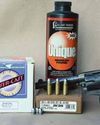
The Problem with Low Pressure Loads
Bullets & Brass
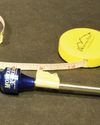
Measurements for Rifle Handloading
Handy Techniques for Accurate Ammunition
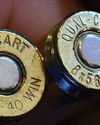
THE BRASS RING
In Range
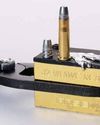
Semi-custom Bullet Moulds
Mike's Shoot in' Shack

REVISITING THE 6.5 -06 A-SQUARE
Loading New Bullets and Powders
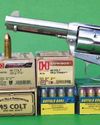
Cimarron Stainless Frontier .45 Colt
From the Hip
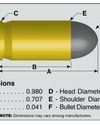
9x18mm Makarov
Cartridge Board
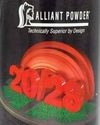
Alliant 20/28
Propellant Profiles
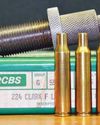
.224 Clark
Wildcat Cartridges